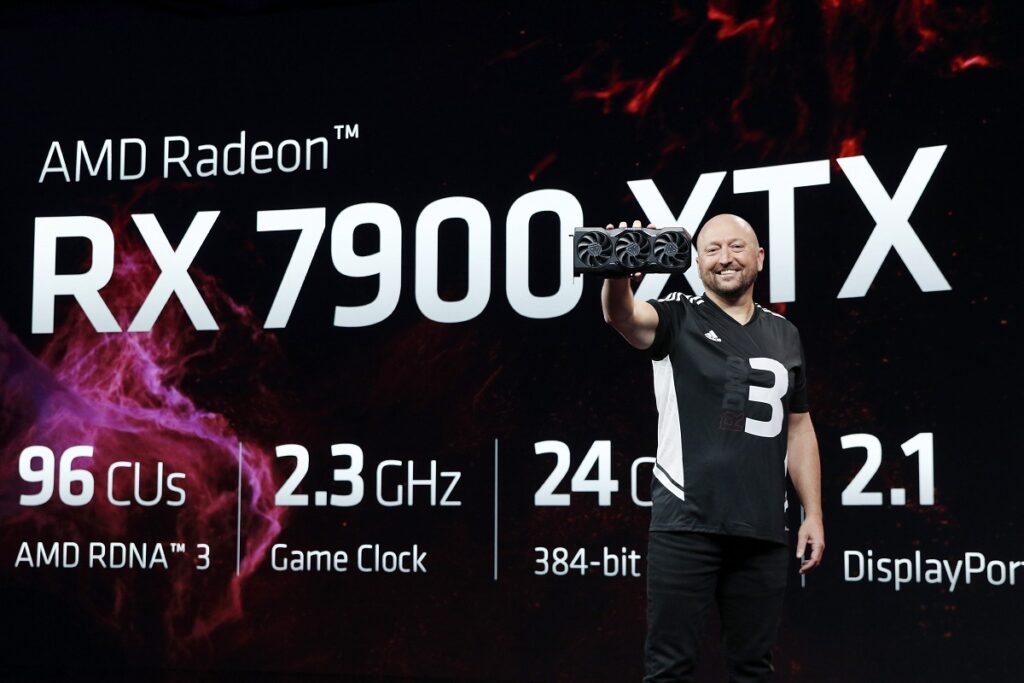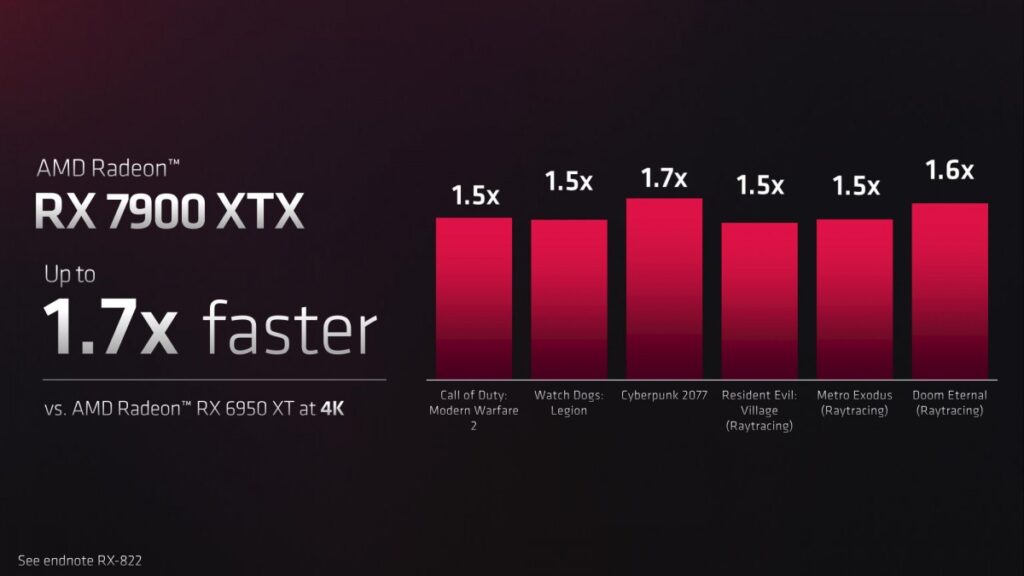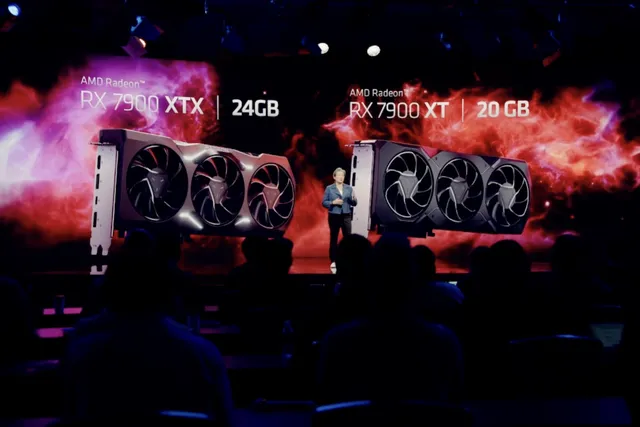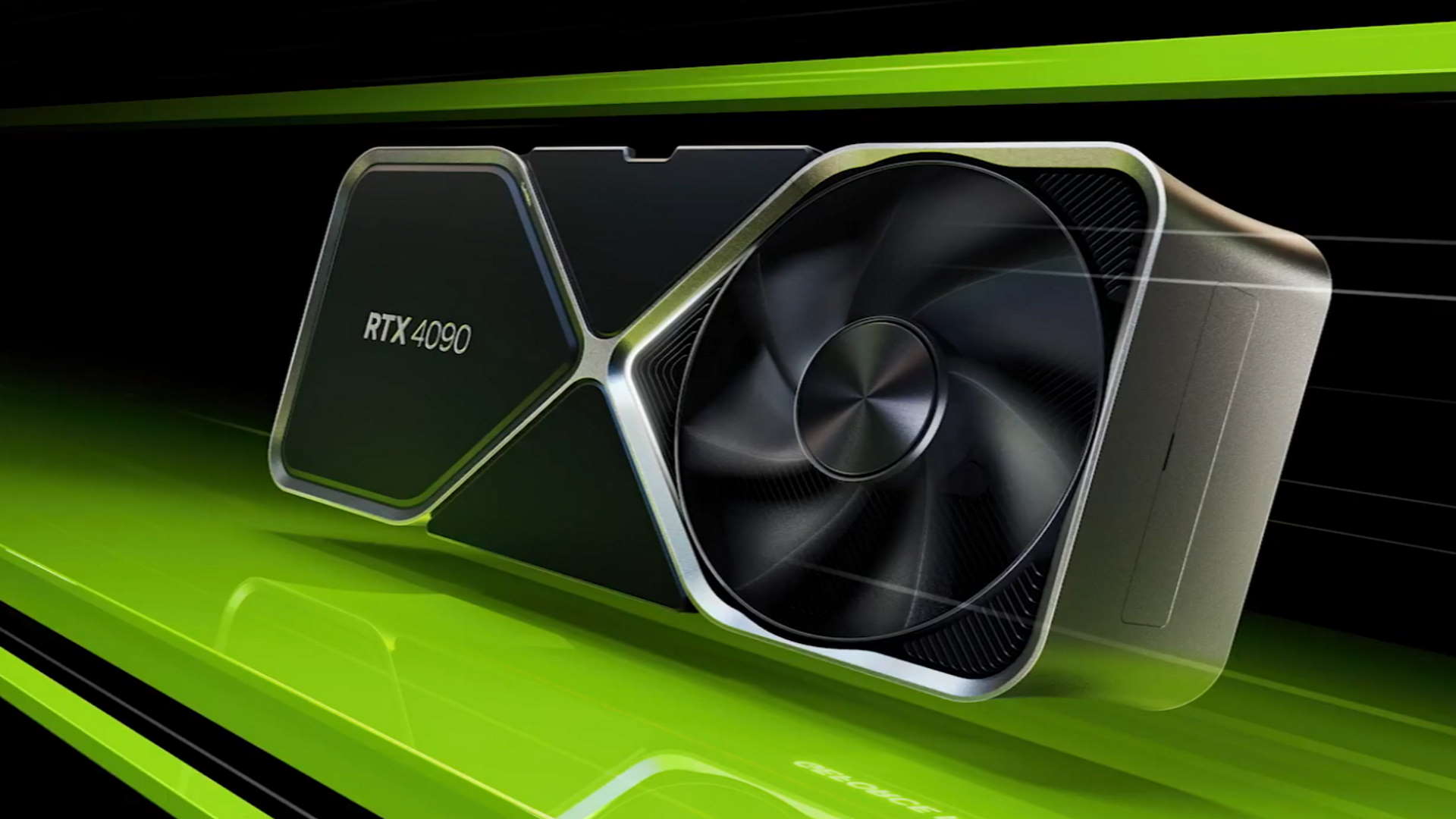AMD has launched the RX 7900 XTX and RX 7900 XT graphics cards, the first to be powered by its new RDNA 3 architecture. This implies they employ a chiplet design, similar to the company’s Ryzen CPUs.
Both cards will be available on December 13th. The 7900 XTX will cost $999, while the XT will be $100 less at $899. That is a huge price increase over what the previous generation cards are presently selling for – the top-spec 6950 XT retails for $849, while the base 6900 XT is $679, despite having debuted at $1,099 and $1,000, respectively. The RTX 4080 from Nvidia, on the other hand, begins at $1,199 while 4090 at $1,599.
Well it would be really interesting to see how AMD’s next generation of cards will respond against Nvidia’s newest RTX 4000 series GPUs.

More about AMD’s RX 7900 XTX and XT
AMD’s RX 7900 XTX is the company’s flagship graphic card, promoted as a 4K gaming card that is up to 1.7 times quicker than the RX 6950 XT at that resolution. It contains 96 2.3GHz processing units and 24GB of GDDR6 memory with a 384-bit interface.
AMD looks to be primarily concerned with performance per watt in this case. AMD may have an efficiency edge here, with a board power of just 350 watts compared to the 450 watts on the RTX 4090, albeit it does consume more power than Nvidia’s basic RTX 4080.
The RX 7900 XT is a less powerful version, with 84 compute units @ 2GHz, 20GB of GDDR6 memory at 320 bits, and a board power of 300W.

With AMD’s RX 7900 XTX and XT having GDDR6 memory rather than GDDR6X memory for both cards, primarily because it consumes less power. Both cards will require two standard 8-pin connections, thus no additional power connectors or adapters are required. Nvidia used a new 12VHPWR connection for the 4090.
The RX 7900 XT is a less powerful version, with 84 compute units @ 2GHz, 20GB of GDDR6 memory at 320 bits, and a board power of 300W.
With RDNA 3, AMD promises a 54 percent increase in performance-per-watt over RDNA 2, which employed a more typical GPU architecture. AMD claims it can produce up to 61 TFLOPs, compared to RDNA 2’s 23 TFLOPs, however it’s worth remembering that these statistics aren’t necessarily comparable when comparing architectures. That means we won’t be able to directly compare consoles like the PS5, Xbox Series, and Steam Deck, which feature RDNA 2, to the company’s forthcoming PC GPUs based just on statistics.

This is why RDNA 3 is important
As per AMD, RDNA 3 is the first time a chiplet architecture has been utilized in a gaming GPU, and the company chose the design to employ “the appropriate process technology for the right purpose.” It essentially implies that it can employ cutting-edge 5nm technology for graphics processing while depending on more “mature” 6nm processors for memory caching rather than needing to use the fancy stuff for everything.
With RDNA 3, it delivers AMD’s chiplet design to gaming GPUs. And AMD is predicting significant increases in 4K performance.




